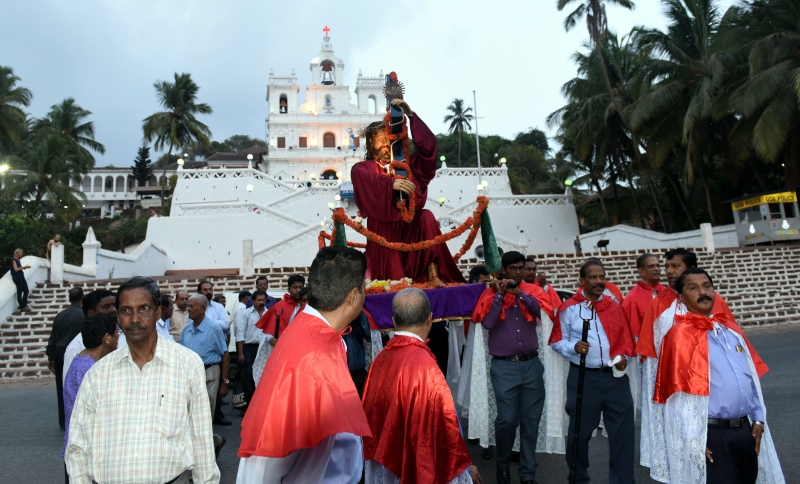
The season of Lent, which begins on Ash Wednesday, holds a special significance to every Catholic, particularly to a Goan. An important part of Lent is the ‘Santos Passos’, which is observed traditionally in Goa, more particularly in villages.
Santos Passos, which means “Holy Steps”, is a ‘depiction of the ordeal’ and ‘contemplation on the sufferings of Jesus’ as he journeyed to mount Calvary where he was crucified.
ORIGINS
According to Fr Francisco de Souza, chronicler of the Society of Jesus, the origin of Santos Passos is attributed to Fr Gasper Barzeo, a Dutch Jesuit priest in the Jesuit College of St Paul in Old Goa in the 16th century. He made use of this ‘theatrical spectacle’ to strengthen and sustain devotion among the faithful.
Fr Barzeo instituted the procession of ‘flagellants’ (public flogging) every Friday to keep up this fervour. He would preach on the words of the Psalmist: multa flagella peccatoris, (many are the scourges of the sinner), followed by a period of silence for the faithful to reflect on their past life.
He would then speak for another half hour on some passage from the Passion of Christ. This was followed by the display of the Cross to the people, who in turn would shed tears and scourge themselves.
From then on, sermons, representations and processions became a regular custom during the Lenten season. At the end of the Lenten weekly programme, some scene from the Passion was displayed on a stage in the church, followed be a procession.
Initially, some religious orders in Old Goa strongly protested against this practice in Lent. But later, seeing the ‘wisdom’ of the custom, they, as well as the parish churches, adopted it.
So on a particular day of each week of Lent (usually Sunday), the Santos Passos would be held in every church in the past. It would begin with the priest preaching a sermon on some passage of the Passion, then a curtain was raised and a representation of the same passage was displayed on a movable stage before the high altar, wherein only the image of Christ was shown. A procession with singing would take place at the end.
PRESENT PRACTICE
Earlier, the Santos Passos would be held every Sunday of Lent in all churches of Goa, but now, most churches have it on one particular day during Lent, leaving only a few churches to follow the tradition. These are arranged in such a way that the faithful can participate in more than one Santos Passos, if their devotion prompts them.
On the day of Santos Passos, the Irmãos or Confrades (members of the Confrarias or Associations of the Church), wearing Opa Mursa, a red and a white cape, carry on their shoulders along the designated route, the life-sized image of Jesus clothed in purple vestments, with a huge wooden cross on His shoulders.
On the way, they would make three halts (descansos - literally means ‘rest’), representing the three falls Jesus had on the way to mount Calvary. During the past, at every descanso, they would play or sing motetes (hymns related to the Passion of Jesus). As the procession moved back to the Church, another tableau of Our Lady, dressed up in a mantle of blue joined the procession and together these were taken to the Church.
At the Church, a boy or a girl, trained by the Maestre de Igreja (choir master), standing on a height sang the Veronica and while doing so he/she would enrol an imprint of His face, to enact the scene of Veronica wiping the face of Jesus on his way to Calvary. Here, the priest would preach a sermon on the suffering of Jesus Christ. The tableaus were then taken to the Church and kept for public veneration.
Over the years, attendance for the Santos Passos has greatly reduced and the primary reason for it could be the other modes of Lenten prayers, such as the Lenten Tiatrs, written mostly by priests and performed during the Lenten season on the stage.
(The writer is former director of Thomas Stephens Konknni Kendr at Porvorim)